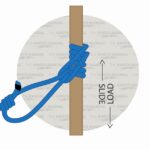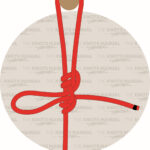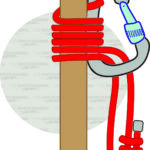An Adjustable Grip Hitch is a popular slide-and-grip knot. It provides friction as you pull it, but you can adjust it when not loaded. It’s usually used for general applications, like tensioning tent guylines.
Quick Guide: Tying an Adjustable Grip Hitch
To tie an Adjustable Grip Hitch, go around the post or tree with the end of the rope (step 1). Then wrap it 2 times around the standing end in the direction of the post (steps 2-3). On the third turn, go around both strands and tuck it underneath the strand formed on the last turn (step 4). Tighten it by holding the knot with one hand and then pulling the working end (step 5).
Depending on the material of the rope, you may need to do 3-4 turns instead of just 2 in steps 2-3. This will improve the friction of the knot.
You can also tie it slipped for a quick-release feature. Simply fold the end in half before tucking it under the third turn in step 4. This will allow you to untie the knot just by pulling on the working end.
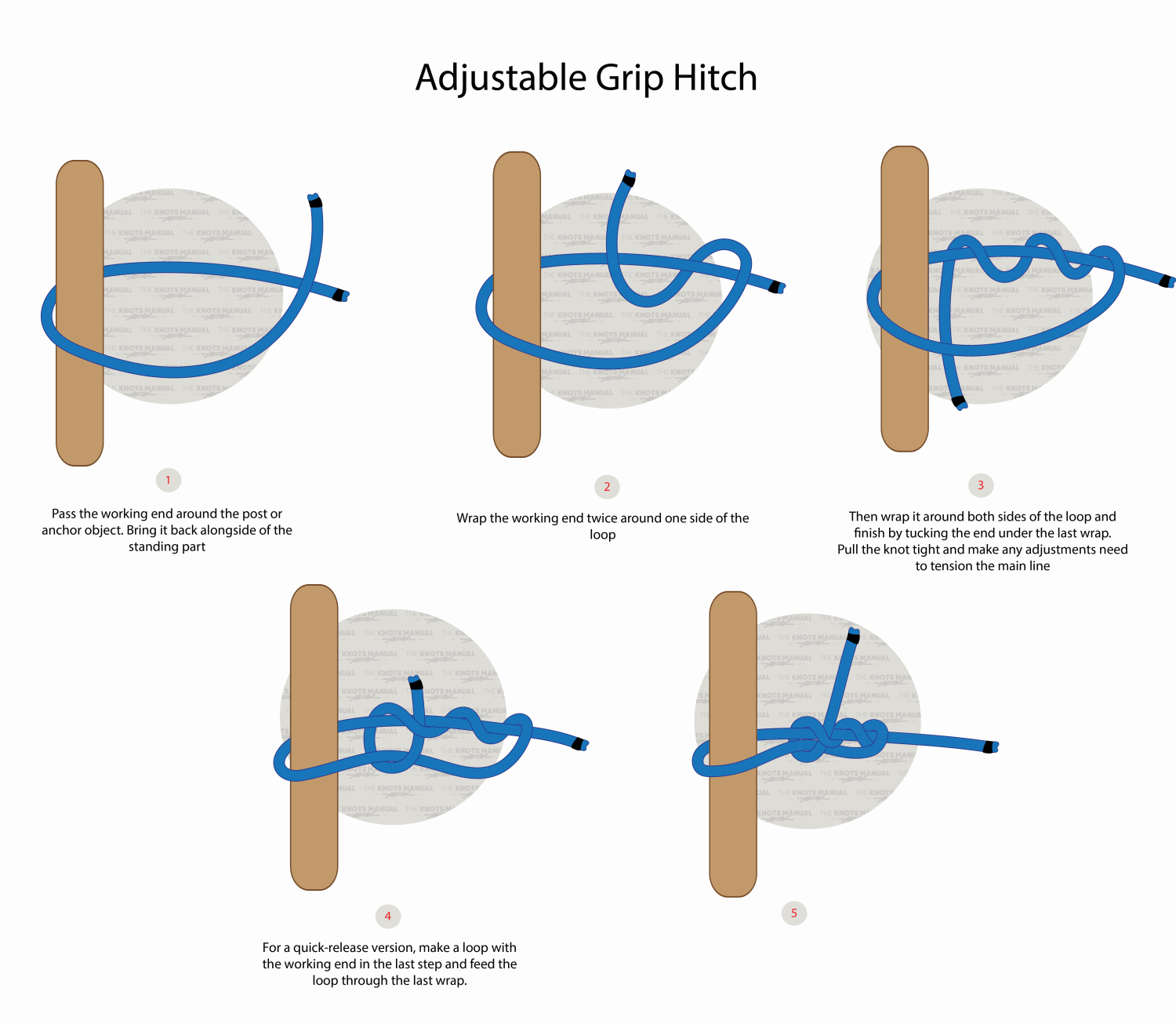
Pros and Cons of the Adjustable Grip Hitch
The main advantage of the Adjustable Grip Hitch is that it is easy to tie. It’s one of the easiest slide-and-grip hitches out there, and slightly easier to remember than the Taut Line Hitch for most people.
It also provides a good amount of friction when pulled. If it’s still slipping, you can simply introduce more turns around the standing end of the rope in steps 2-3.
Another advantage is that the Adjustable Grip Hitch is easy to untie. It doesn’t jam because the end is tucked under one strand. If you tie it slipped, then it’s even easier to untie.
The only downside is that this knot becomes more likely to slip if you pull it close to a large-diameter object, like a tree. When the loop is spread apart, the knot starts to untie by itself.
Common Uses for the Adjustable Grip Hitch
Most commonly the Adjustable Grip Hitch is used in general survival and outdoor applications. It’s used to tension tent guylines, tarp ridgelines, clothes hanging lines, and on similar occasions. It allows you to put a good amount of tension on the rope by making the adjustable loop larger.
Knots Like the Adjustable Grip Hitch
Taut Line Hitch (Midshipman’s Hitch): A very similar slide-and-grip hitch to the Adjustable Grip Hitch. The only difference is that the third turn is made on the opposite side of the knot. This resolves the issue of it untying when the loop is spread apart. It provides a similar amount of friction and is almost as easy to tie.
Farrimond Friction Hitch: A less-popular friction hitch used for similar purposes as the Adjustable Grip Hitch. It is a bit complicated to tie, but it creates a quick-release hitch that provides a good amount of tension when pulled.
Rolling Hitch: A popular slide-and-grip knot used to attach to other ropes to distribute pulling weight or to pull heavier ropes. It’s also sometimes used to attach to poles and posts. It tends to slip more often with modern ropes that are made from more slippery materials.
Prusik Knot: The most popular slide and grip knot. It’s most commonly used when ascending or rappelling a rope in climbing and mountaineering. It requires a Prusik’s Loop and it cannot be tied on rope end.
Step-By-Step Guide: How to Tie an Adjustable Grip Hitch Knot
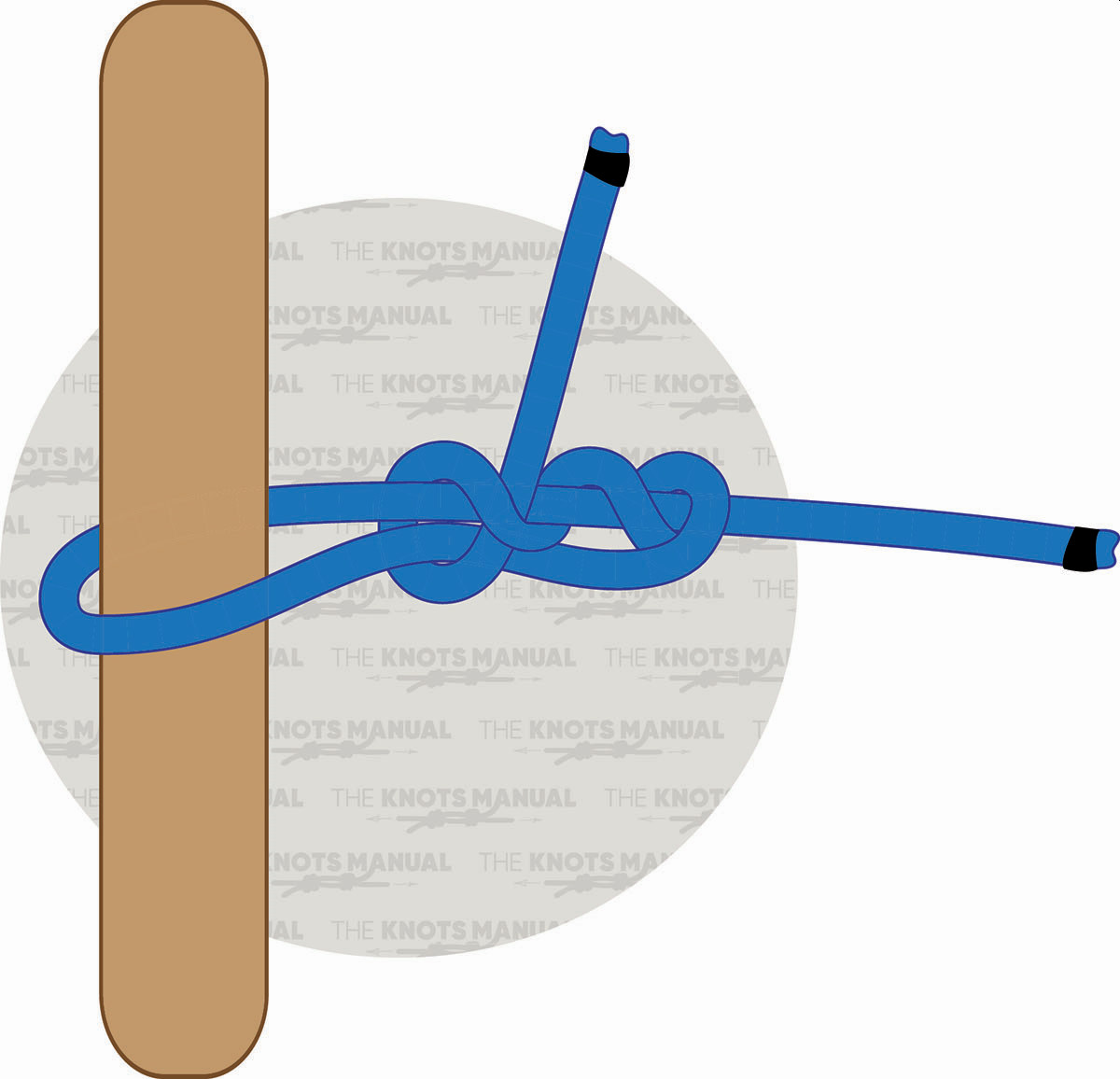
A step-by-step guide on how to tie an Adjustable Grip Hitch.
Step 1:
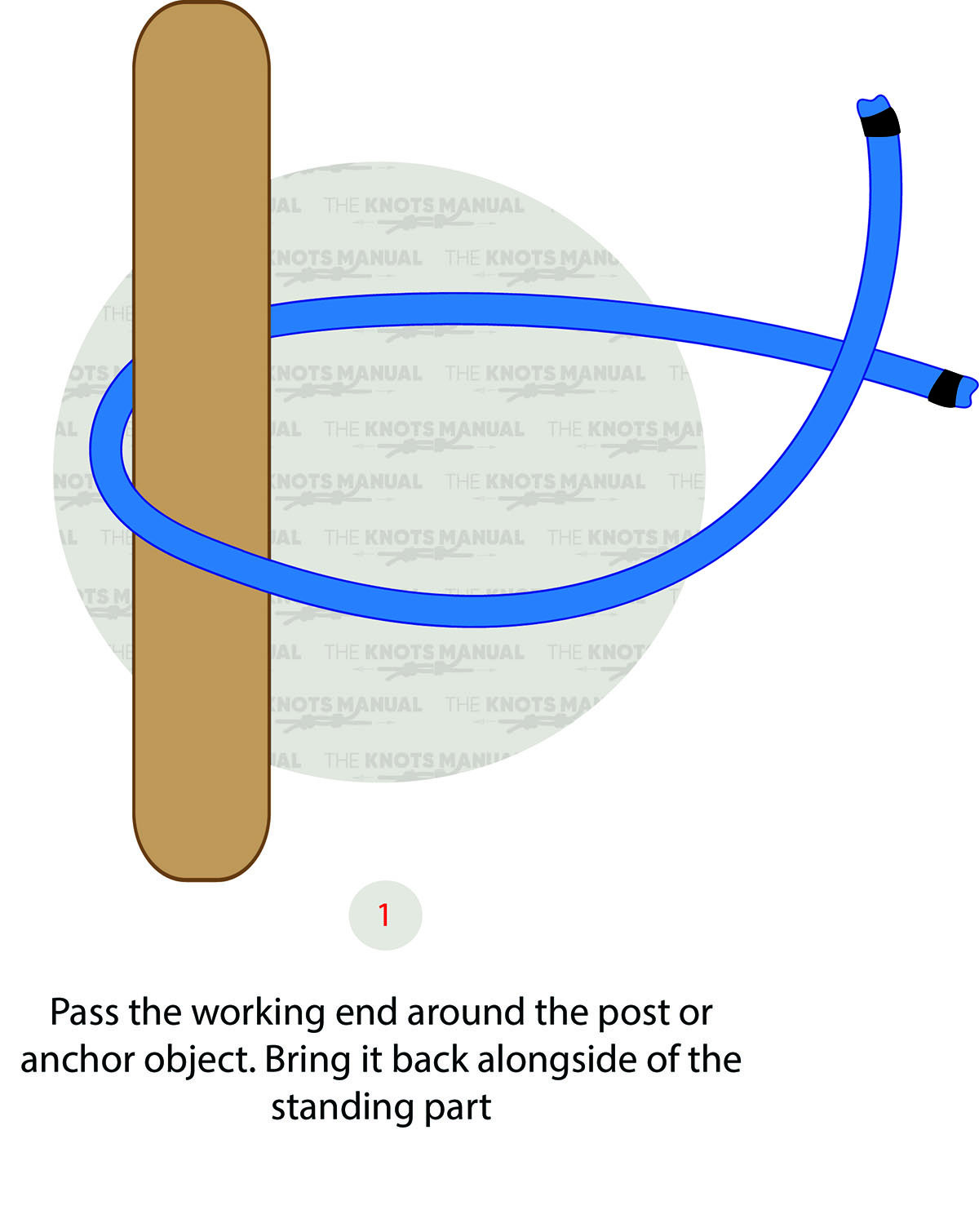
Pass the end of the rope around the post and place it over the standing end.
Step 2:
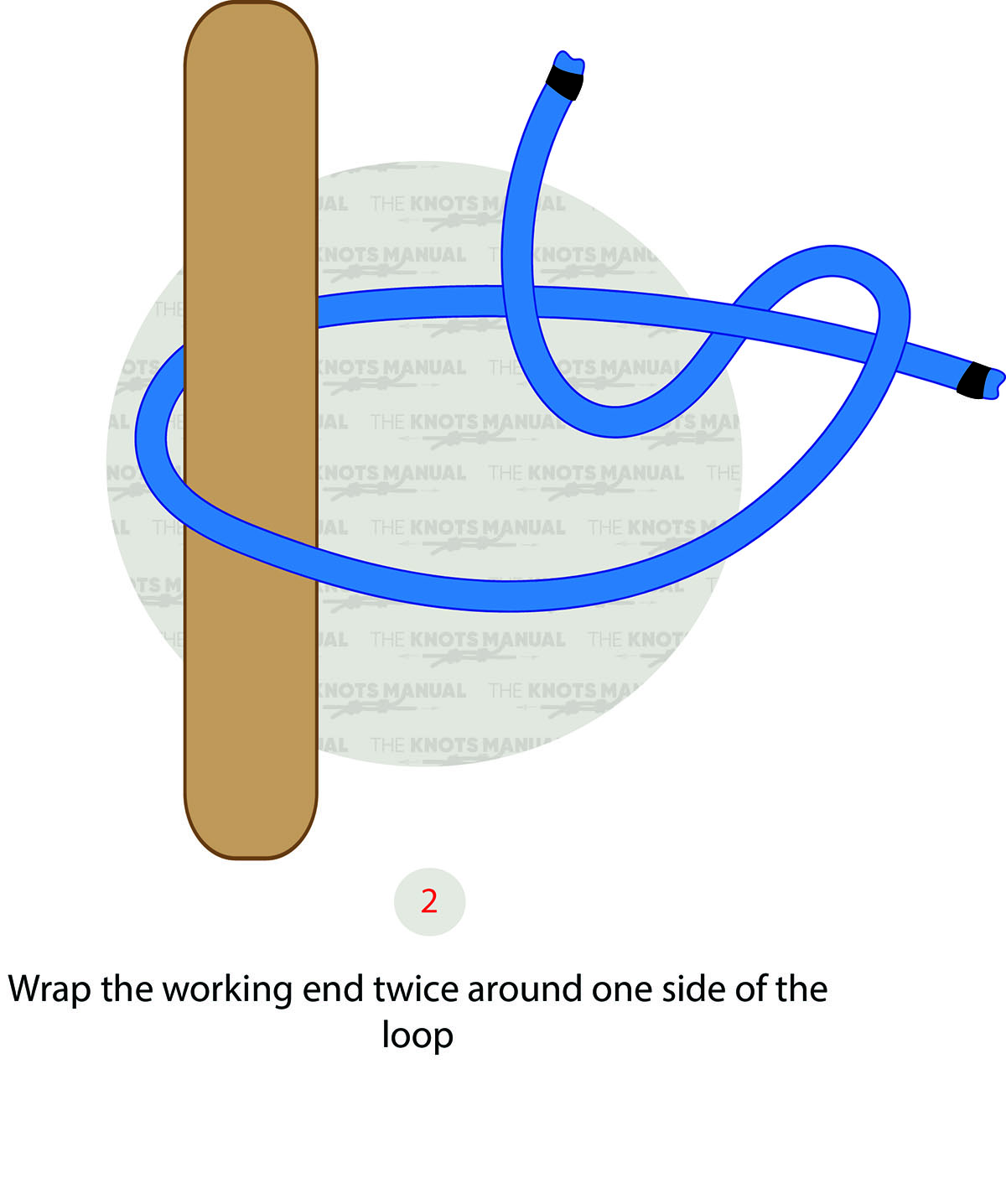
Wrap it once around the standing end in the direction of the post.
Step 3:
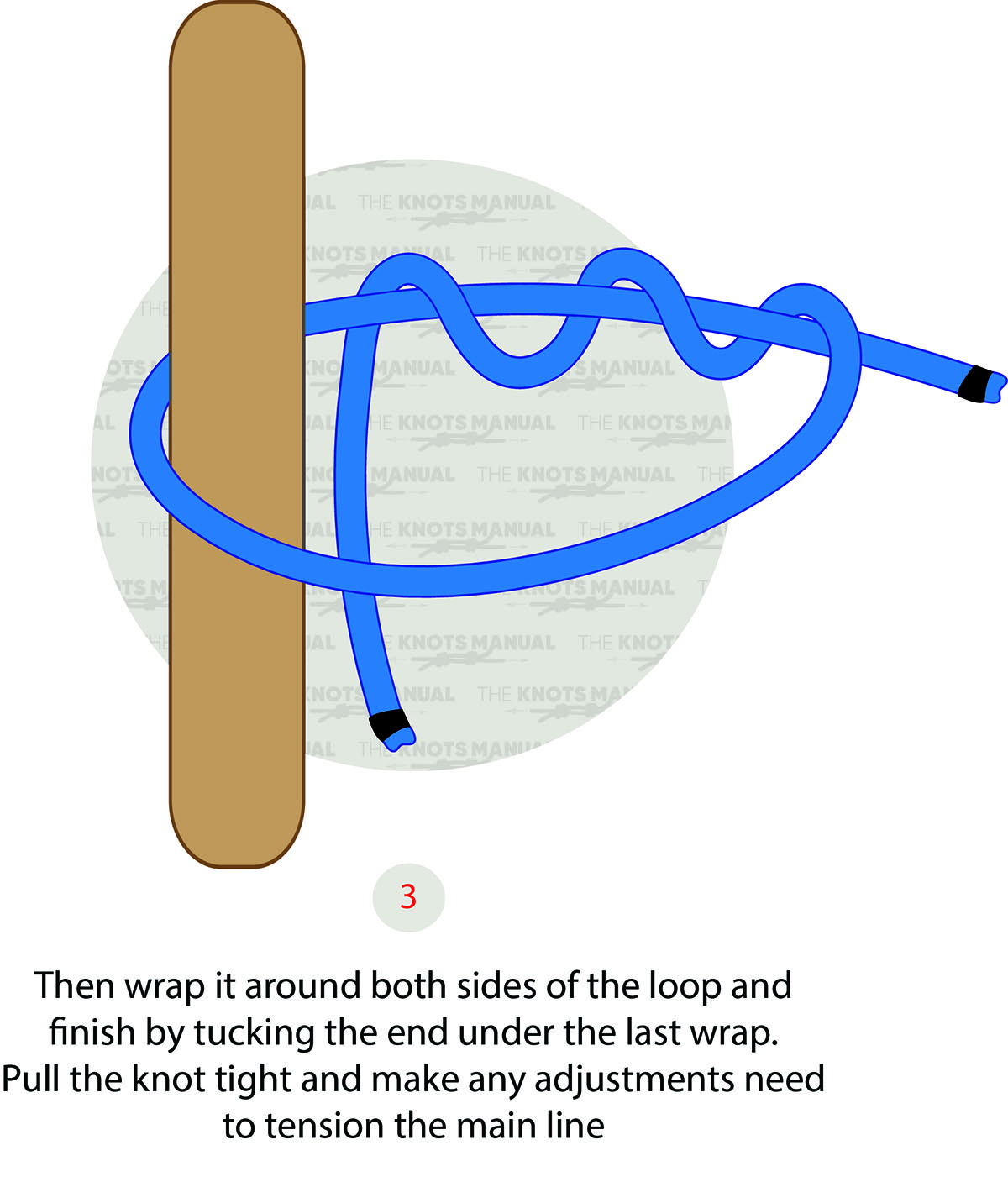
Do a second turn around the standing end.
Step 4:
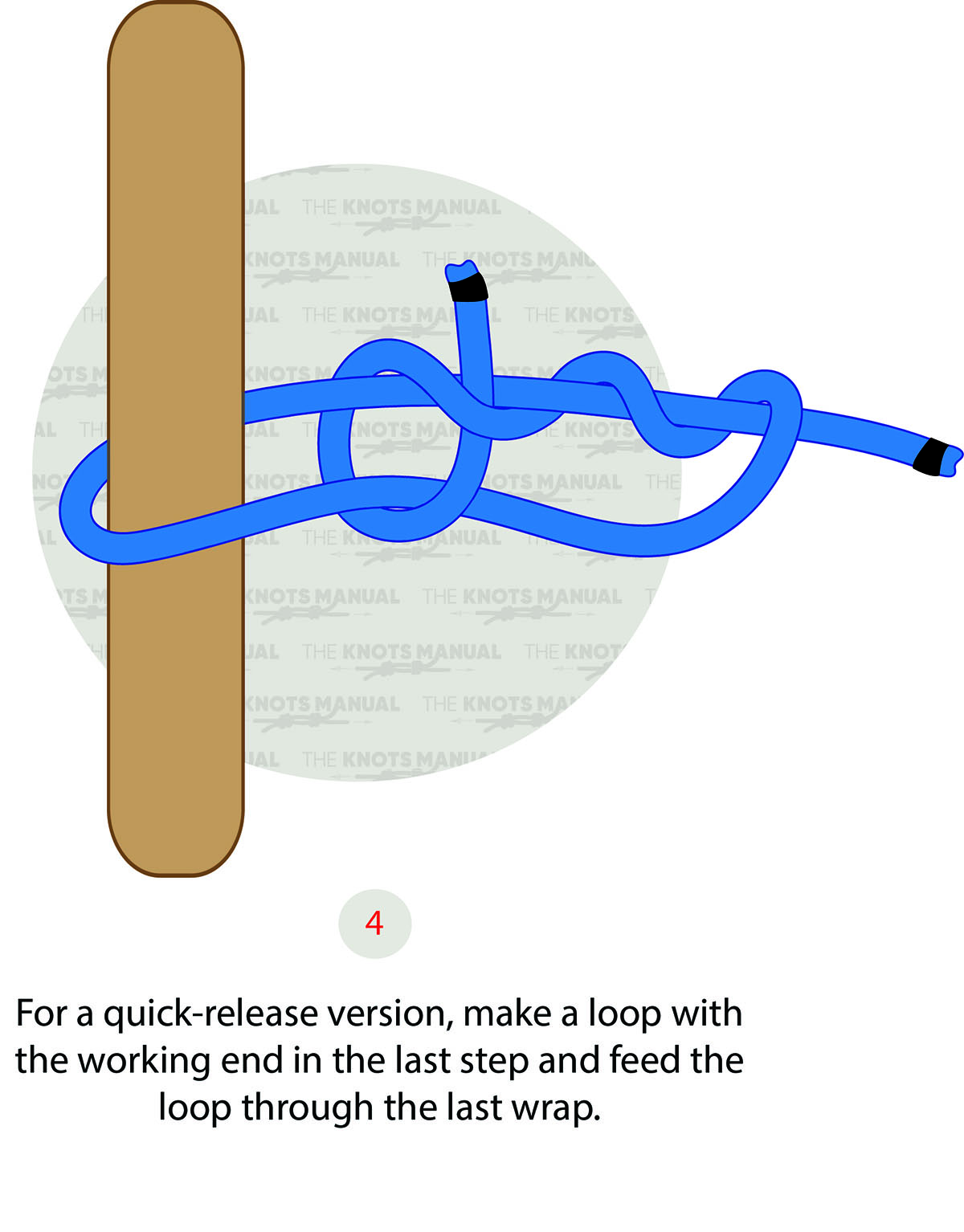
On the third turn, go around both strands, instead of only the standing end. Then pass it underneath the strand formed while making the last turn.
Step 5:
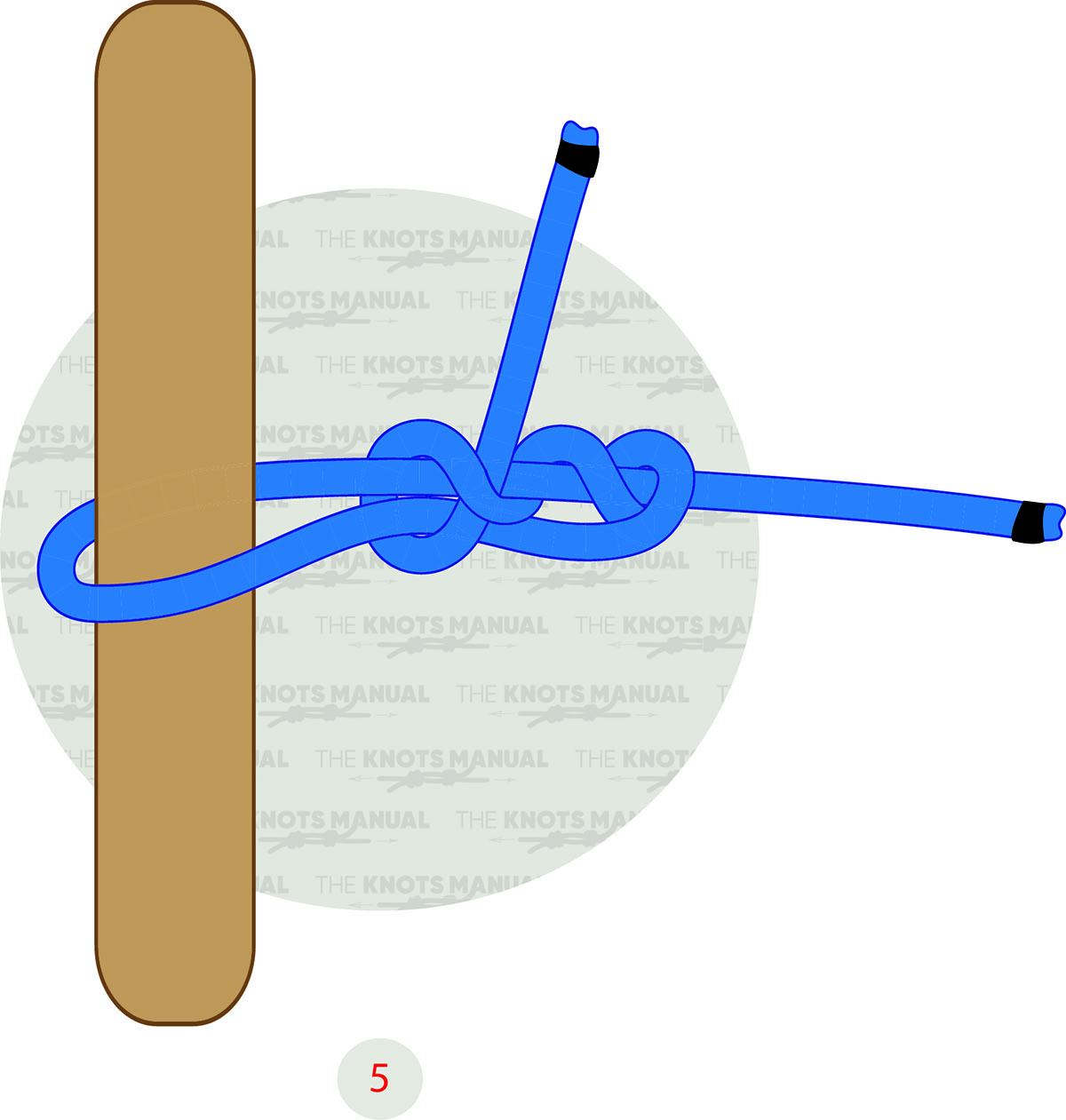
Tighten the knot by holding the loop near the post with one hand and pulling the working end with your other hand.
